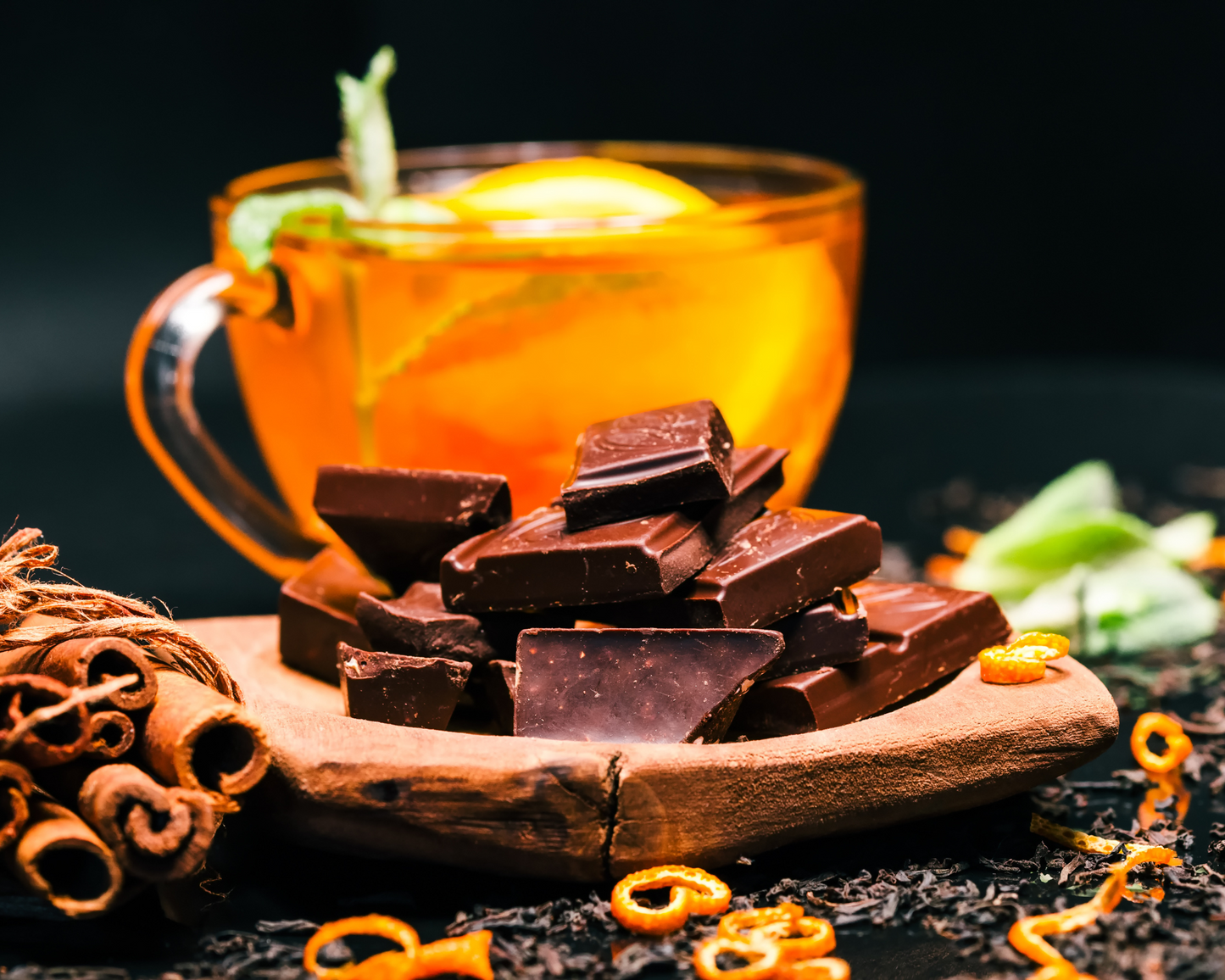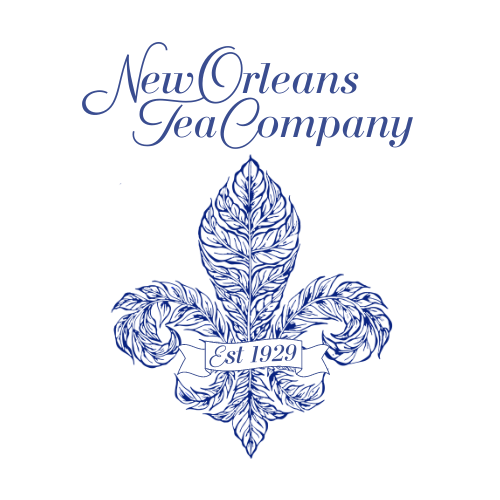
Tea and chocolate: two little luxuries that are wonderfully delightful on their own, but even more magical when paired together.
Not only is pairing tea and chocolate a tasty way to discover more about your own palate and taste preferences, but it’s also a means to explore new flavors through the interplay of sweetness and astringency.
Whether you’re wanting to surprise your guests with a unique culinary experience at your next dinner party or are simply looking to treat yourself, our guide will provide you with everything you need to have a successful tea and chocolate pairing.
First Things First: Quality Control
While it’s possible to incorporate any chocolate into your pairing menu, the most enjoyable pairings include products that have been crafted with quality in mind. A few things to keep in mind when assessing the quality of a chocolate or tea.
- Terroir: As with tea, terroir – the altitude, climate, and soil in which a plant is grown – plays a key role in the production of the cocoa bean, and subsequently the chocolate that’s made from it. Good growing conditions = good tasting chocolate.
- Craftsmanship: Quality chocolate, like quality tea, is also the result of a combination of the craftsmanship and passion of its maker. Only when cocoa beans have been handled by a skilled artisan can you fully experience the nuances and complexities that you’d otherwise be missing out on.
- Natural, minimal ingredients: You’ll also want to avoid selecting flavored teas, as their artificial flavors (and sometimes even the natural ones) and overwhelming aromas will mask the nuances the chocolatier intended for the bar. A successful pairing will allow you to be able to taste the tea and the chocolate at the same time, while also observing the texture and mouthfeel of both. However, it can be fun to experiment with scented teas and natural blends, as you’ll see later on in this guide.
Looking for high quality chocolate? There are a number of artisan, bean-to-bar chocolatiers out there, but we’re particularly fond of New Orleans-based Piety and Desire Chocolate.
Complement, Contrast, or Enhance
Next, you’ll want to choose what kind of flavor experience you want to create with your pairing. Your selected tea and chocolate combinations should complement, contrast, or enhance the flavors of each other.
- To complement: Select a tea and chocolate that may not have the same characteristics, but are still compatible.
- To contrast: Choose a tea and chocolate that have entirely different flavor notes to accentuate the differences.
- To enhance: Pick a tea and chocolate that share similar characteristics and tasting notes for balanced flavor combinations.
A Match Made in Heaven: Choosing a Chocolate
When you’re ready to select the chocolates for your pairings, aim to include no more than three to five tea and chocolate combinations, as any more will overwhelm and confuse the palate and fewer will not provide enough comparison.
We suggest using a variety of chocolates that contain varying percentages of cocoa to keep things interesting.
Here are a few ways we like to pair our teas to chocolate.

Dark Chocolate
Dark chocolate has a high cocoa content (at least 43%) and robust bean flavors. With tangy, bitter notes, it’s generally more powerful on the palate than any other type of chocolate.
When pairing tea with dark chocolate, use this rule of thumb: the milder the chocolate, the more astringent a tea you can get away with. By contrast, the more bitter the chocolate, the softer and rounder a tea should be. With dark chocolates, avoid mild, delicate teas, as they will be overpowered by the cacao.
We have found that our Grand Isle Genmaicha and Fleur de Tea work well with the intensity of a very dark chocolate. For dark chocolates with a lower cacao percentage, we enjoy them with strong, full-bodied teas like our Kiss Me, I'm Irish Breakfast tea.
Dark chocolate also lends great contrast for sweet and spicy flavors and will tolerate bold flavors without being overshadowed. For this reason, our Satsuma Spice, with its rich, spicy notes and intense flavor is perfect with dark chocolate.
Milk Chocolate
Conventional milk chocolate can have as little as 10% cacao percentage, and may contain milk solids or powder, sugar, lecithin, and vanilla, making it mild, sweet, and quick to melt in the mouth. Milk Chocolate is easily the most versatile type of chocolate for tea pairing.
Generally, any round, soft black tea will pair well with milk chocolate, but we recommend taking advantage of the chocolate’s milky essence and pair it with teas that have a sharper essence like our Mardi Gras Indian Spiced Chai, a blend of black tea and masala spices. An assertive green tea such as Second Line Sencha also works nicely, as does a naturally-flavored black tea like our Chocolate Pot de Crème.
One of our favorite teas to pair with milk chocolate is our Fais-Do-Do Formosa Oolong. When paired with a decadent milk chocolate, this tea’s toasty notes are taken to the next level.
White Chocolate
Made with cocoa butter, sugar, and milk solids or powder, white chocolate is rich, smooth, and incredibly creamy on the palate. When selecting a tea to pair with it, consider the ingredients you usually find in traditional white chocolate (berries, lemon, and macadamia nuts, for example) and use these flavors as a guide.
We’re a fan of pairing white chocolate with our Marie Laveau Lemongrass, as its natural acidity and zing balances out the sweetness of the chocolate while also cleansing the palate. Jazz-min is another tea that pairs well with this chocolate, providing soft, floral notes.
We also enjoy more unexpected combinations that leverage bitter flavors and one of these is matcha, which boasts a delightful astringency that contrasts the sweetness of white chocolate and creates a luxurious mouthfeel.

Inclusion Chocolate: Caramel
For a unique flavor combination, pair chocolate made with caramel or chocolate-covered caramels (bonus if there’s also sea salt) with our wonderfully leathery Bayou Bonfire Souchong. Enjoy the savory notes of the salt and smoke as the two marry with the sweet caramel melting on your tongue.
Inclusion Chocolate: Nuts and/or Fruits
Consider pairing chocolates with almonds or hazelnuts with a mild green like our Grand Isle Genmaicha or Merci Beaucoup to bring out the nuttiness of the chocolate. For chocolates including fruit, try our brisk and bold Front Porch English Breakfast or Flambeaux Fukujyu to bring out the fruitiness in the chocolate.
Tasting Time: How to Taste the Tea and Chocolate
Once the pairing menu is finalized and ready to be served, cut the chocolate into small portions with just enough volume to allow three or four nibbles of each. Prepare the tea, and consider displaying the dry leaves and chocolates for guests to see and smell.
Once you’re ready to begin your tasting, follow the steps below:
- Start by taking a bit of chocolate into the mouth and to allow the chocolate to melt slowly until it covers the tongue. Tasting the chocolate first will ensure that the rich cocoa will be softened by the warm tea and ensure that all flavors and tones are heightened.
- Next, slurp some of the tea so that it reaches the back of the mouth and the furthest taste buds. Make sure you breathe to take full advantage of the character of the tea. Swirl the liquid to coat your mouth and swallow. Compare the mouthfeel of the tea to the mouthfeel of the chocolate. Is it thick or thin? Sweet or bitter?
- Take another taste of chocolate and discover how the tea has influenced the second nibble. Does the tea enhance the flavors of the chocolate? Or does the chocolate bring out the flavor notes of the tea?
- Take a few luxurious minutes to evaluate each pairing and to compare your findings. If you’re tasting with friends or dinner guests, take notes. Talking about the flavor combinations can be just as fun as tasting them. Tea is, after all, better together.
Happy pairing, y’all!
